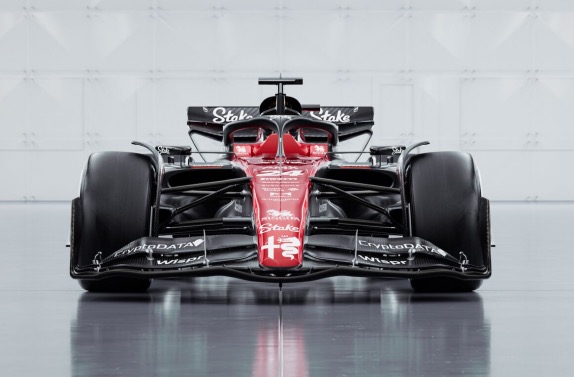Mark Hughes, an expert on the championship’s official site, has taken a close look at the Alfa Romeo C43 presented the day before and believes they really managed to solve the problems that plagued the team at Hinvil last year.
Alfa Romeo technical director Jean Monchaux gave no secrets about the C43, of which the team has high expectations. While the car is generally similar to last year’s, there are differences in a number of key areas, which Monchaux says will overcome the aerodynamic limitations that prevented the C42 from improving its efficiency last year.
Combining what little Monchaux was willing to share with what we saw in the photos of the car, we can assume that Hinwil has radically redesigned the cooling system layout to remove obstacles to the airflow path between the body and rear wheels .
It seems that, among other things, the placement of the radiators in the car has been completely revised, which may have required an increase in the wheelbase. Significant changes were also required to the rear suspension design, and Monchaux confirmed this.
Judging by the location of the hatches on the body of the car, the location of the radiators was moved forward – similar solutions were seen last year at Mercedes, Red Bull and Alpine. The shutters are located behind the cockpit of the C43, which also suggests that the radiators have now been moved closer to the center of the car as well.
The airflow that flows around the body in the area between the rear wheels has a significant effect on the efficiency of the car’s underside, and therefore on the level of downforce. The difference in air pressure behind the diffuser and what passes through the venturi tunnels determines the speed of the airflow below the bottom.
The faster this flow moves, the higher the pressure level. The more obstacles in the flow path above the rear body, the more difficult it is to increase the flow rate below the floor. When the car is traveling at high speeds, the area between the rear wheels is actually “choked” and can no longer take in air.
Because the air outlets at the rear of the machine are now higher, there is less obstruction to the airflow than with the C42. Changes to the suspension design have also freed up more space, although there’s no way to analyze everything in more detail and compare it to the suspension geometry of last year’s car.
The radiators on the sides of the car have now been moved upwards and the area of the side pontoons and bonnet is reminiscent of last year’s solution used by Red Bull.
On the front shots of the C43, you can see that the area below the air intakes on the side pontoons is more “undercut”, which also allows faster flow to the underside of the hull. All of these measures also help to improve the aerodynamic efficiency of the rear of the machine.

However, such changes to the chassis design also have a negative side: with a higher placement of the radiators, the car’s center of gravity also shifts upwards, and an increase in wheelbase inevitably leads to an increase in overall weight. But if a large enough increase in aerodynamic efficiency is achieved at the same time, it offsets the possible consequences, and it is quite clear that Hinwil has already set priorities.
Source: F1 News
I am Christopher Clyde, an experienced journalist and content writer with a passion for sports. I have been writing about Formula 1 news for the past five years and am currently employed as an author at athletistic.com, one of the top sports websites in the US.


